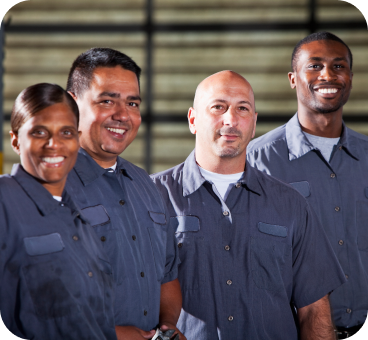
Water Restoration Training: 8 Best SOPs for New Water Technicians



Throwing someone into the water and hoping they learn how to swim is not exactly an effective or enjoyable experience. So why does this method sound familiar when it comes to water restoration training?
New water technicians are frequently dropped into the deep end without formal guidance or standardized procedures. And the problem is too expensive to ignore.
The cost of bad onboarding can set a company back over $13,000, as it often takes 8+ weeks for water techs to become productive in their roles. During this time, constant questions and mistakes on the job site impact the productivity of others and can lead to unhappy customers and a damaged business reputation.
Sink or Swim: The State of Water Technician Training
What makes restoration training problems more pressing is the fact that the demand for skilled water technicians has never been higher.
Our 2023 State of the Industry Report shows that 61% of restoration companies are focused on the water damage restoration process as their main service offering. But without a more methodical, streamlined approach to water restoration training, owners and techs are drowning instead of profiting, unable to meet demand or uphold customer expectations.
Standard Operating Procedures (SOPs), like the hundreds offered in KnowHow’s template library, can be the lifelines new technicians need to quickly get up to speed with a structured and consistent how-to.
How SOPs Can Transform the Water Restoration Process
Onboarding water technicians is tough due to outdated and inefficient training methods, or the fact that their roles have not been clearly defined.
Often, only a few seasoned techs or owners possess essential know-how, creating a bottleneck when it’s time to transfer that information. If that knowledge does happen to be documented somewhere, it’s often in old binders, outdated manuals, or Learning Management Systems (LMS) that focus more on theory than practical skills.
Without a standardized approach to training, new hires are expected to learn the water damage restoration process as they go. This on-the-fly learning leads to longer learning curves, inconsistent service, and quality control issues.
This is where SOPs come in as a tool to tackle these problems. SOPs can greatly improve water restoration training by:
- Streamlining knowledge transfers by turning the hard-earned experience of seasoned pros into resources everyone on the team can use.
- Bringing training materials up-to-date with easy-to-follow procedures that reflect the latest industry standards.
- Keeping things consistent with clear step-by-step guides on handling tasks, so new techs become confident and competent.
- Boosting service standards by ensuring work is delivered consistently to make customers happier and more trusting.
Top 8 SOPs For Training New Water Technicians
The following SOPs cover essential aspects of the water restoration process to guide new technicians from initial assessment to the final steps of restoration.
Having these SOPs in your restoration training toolkit will empower water technicians to tackle a wide range of water damage scenarios with confidence, consistency, and expertise.
1. Classes of Water Damage
In water restoration training, recognizing and understanding the four classes of water damage is key to the water damage restoration process. Each class will guide technicians in assessing how much water has soaked into materials and what kind of mitigation equipment and methods they need to fix it. From small amounts of water in non-porous materials to extensive saturation in things like hardwood and plaster that require advanced dying techniques, getting these classes right leads to a better and faster fix.
2. Categories of Water Damage
Understanding and distinguishing between categories of water damage is crucial for water restoration training, as it will impact the entire approach to mitigation and restoration. Unlike water classes, which help techs recognize the extent of water absorption, categories focus on the water's source and level of contamination. From clean water posing no health risk, to grey water with some contaminants, and black water that is highly unsanitary and dangerous, each category will require specific safety measures and standardized cleaning procedures.
3. Remove Baseboard and Trim
In the water restoration process, it’s important to carefully remove the baseboard and trim since these elements can often be saved and reused. The process involves preparing the right tools, starting at an outside corner, and methodically scoring the caulk to prevent damage. Special care should be taken to label and store salvageable pieces for future reinstallation, making the restoration more cost-effective and smooth. The right technique keeps these materials in good shape—just another way that water restoration training that includes SOPs can be a great resource saver.
4. Calculate Standing Water Present on Water Loss
Correctly calculating the amount of standing water in a flooded area is key for effective removal and structural damage prevention. With proper restoration training and standardized procedures, water techs will know how to conduct detailed assessments—including doing a safety check, measuring the dimensions of the affected area, and calculating the volume and weight of the water. These steps help make sure that removal efforts are precisely targeted to protect the building's integrity and speed up fixing the damage.
5. Determine When to Remove Drywall During Mitigation
Deciding when to remove drywall is not just about practical steps but also involves effective, professional communication with homeowners. The process requires identifying the water's source, understanding how long the drywall has been wet, and checking for other materials behind it. Asking homeowners the right questions to gauge the extent of damage and properly explaining the reasons for drywall removal is an essential skill to be developed in water restoration training. It fosters transparency and trust in the mitigation process and boosts customer satisfaction.
6. Install Air Movers
Correctly and confidently installing air movers will speed up the water damage restoration process to dry the affected areas. Steps include determining the right number of air movers, placing them at strategic angles to walls, and knowing how to position them for optimal airflow to evaporate water. This SOP will ensure technicians feel empowered to adjust based on specific situations to be more productive and successful in the field.
7. Operate Phoenix DryMAX XL LGR Dehumidifier
The Phoenix DryMAX XL LGR Dehumidifier is a powerful tool for pulling moisture out of the air efficiently, and mastering it will greatly impact the success of new water techs. This device is compact yet packs a big punch, removing up to 125 ppd at AHAM and fitting easily into vehicles, doubling the amount you can carry. Its standout features include Bluetooth for sending data straight to your app and an easy-to-understand control panel. Knowing how to use, maintain, and troubleshoot this dehumidifier during water restoration training can significantly speed up the drying process on the job.
8. Extract Water from Carpet and Hard Surfaces
New water technicians are often faced with extracting water from carpets and hard surfaces. The process starts with a detailed area evaluation, clearing out items, and gathering the right equipment. Documenting any damage before starting is also crucial. Water extraction varies— techs might need a heavier approach for carpets or even remove the underpad for deeper extraction.
Unlock the Full Potential of Your Team with KnowHow
With the demand for skilled technicians through the roof, the difference between sinking and swimming will come down to the quality of your water restoration training and resources.
For example, KnowHow's Magic Search tool allows your techs to ask questions about any of these SOPs and get instant answers on the job site.
Providing techs with up-to-date and easy-to-follow SOPs not only makes them more confident and competent workers while speeding up onboarding—it can transform the productivity of the entire business.
If you want to access KnowHow's entire template library with hundreds of SOPs for onboarding and training and are curious about how KnowHow's tools can help standardize your busy workforce, book a demo with us today.









